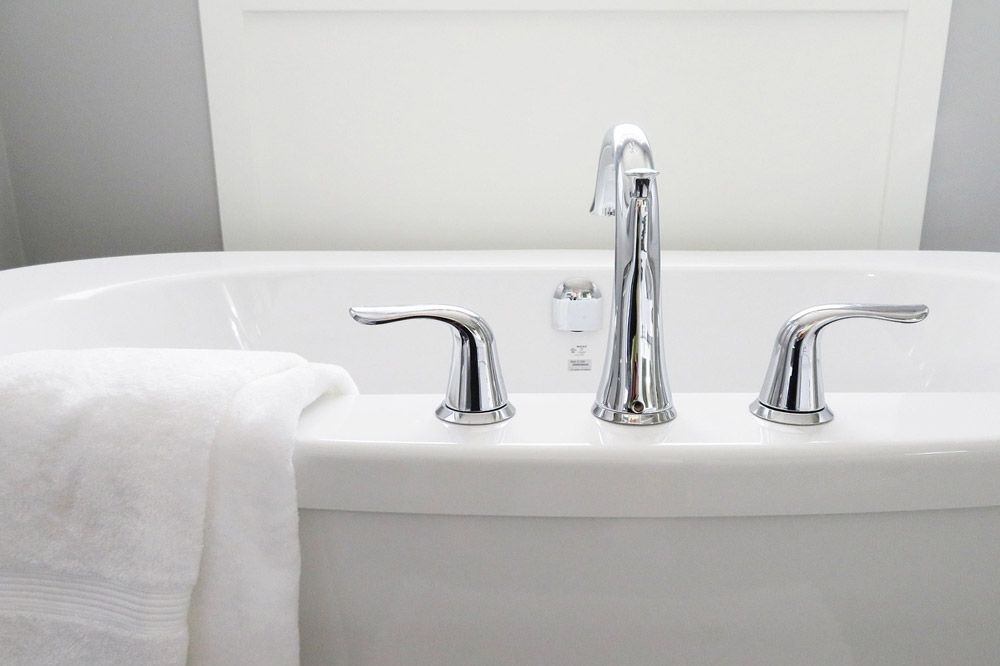Why Does My Sink Keep Backing Up? Common Causes & Fixes
A backed-up sink can quickly move from being a minor inconvenience to a major headache. Whether it’s in your kitchen, bathroom, or utility room, there are signs that something isn’t quite right. It can lead to standing water in the basin, foul smells, and slow drainage. If it keeps happening, the backed-up sink can be more than just a nuisance, it can signal serious plumbing problems that require immediate attention.
If you’re ever unsure about how to deal with a clogged sink, always call in a professional. Getting the correct diagnosis from the outset can save you time and money. There can be a number of reasons why the sink is getting backed up, and we’ll look at some of the most common culprits. Some of them may be minor issues, but some are also best dealt with by an experienced plumber in Westminster.
Clogged Drain Pipes
The most frequent cause of a backed-up sink is a clog somewhere in the drainpipe. In kitchens, food scraps, grease, coffee grounds, and soap scum are the primary reasons behind these clogs. In bathrooms, it’s usually hair, soap residue and toothpaste. This happens because, over time, debris builds up on the walls of your drainpipes. Eventually, this buildup becomes thick enough to partially or fully block water flow, causing slow drainage or a complete backup.
There are a few steps you can take to fix clogged drain pipe. Try a plunger first. Make sure to create a seal over the drain and plunge firmly. If that doesn’t clear up the clog, use a drain snake or auger to physically break up and remove the clog. Avoid chemical drain cleaners. They can cause corrosion in the pipes and often provide only a temporary fix.
Grease Buildup
Grease can be a sneaky villain when it comes to your kitchen sink. It might go down the drain like a liquid, but it solidifies as it cools. That causes it to stick to your pipes, which can clog your drain. That sticky, solidified grease also latches on to other debris over time, making the clog even more difficult. It’s a good practice to simply never pour grease down the drain. Instead, let it cool and dispose of it in the trash.
If you suspect that there is some grease buildup clogging up your sink, there are some steps you can take to try and clear it out. Pour a mixture of hot water and dish soap down the drain to break up the grease. For those that are stubborn, you can use a mixture of baking soda and vinegar and flush down with hot water. You can also consider installing a grease trap if this is a recurring issue.
Blocked P-Trap
The P-trap is the U-shaped pup under your sink. It’s shaped this way to hold a small amount of water within the pipe to block sewer gases from entering your home. However, because it’s shape, it makes it a common spot for clogs in your system. Most of the time, if your P-trap is clogged, you can unclog the blockage yourself with a little do-it-yourself work.
If you want to attempt to clear out the P-trap yourself, the first thing you need to do is place a bucket underneath the P-trap itself. This will help catch any water or whatever is clogging the P-trap without making a mess. Unscrew the connectors on either side of the trap and remove it. Be careful, as there is always water in there, so make sure you do this over the bucket. Clean out any debris from inside the stretch of pipe of the P-trap and then reattach it. Test the sink to see if that’s where the only clog was. If it’s still running slowly or seems blocked, reach out to a professional for help.
Vent Pipe Blockage
Your plumbing system includes vent pipes that let air in and maintain the proper pressure. If a vent pipe becomes blocked by debris, leaves, or even the occasional birds next, it can prevent water from flowing freely. This can cause backups in your system that can appear like the drain is clogged. There are different signs of a vent blockage than your typical clogged pipe.
One of the things you should notice are gurgling noises when water drains. If it seems like there are multiple fixtures that are draining slowly throughout the house, it could also be a sign of a vent blockage. Smells of sewer gas are also an indication that this is where the issue is coming from. Clearing a vent pipe typically requires going onto the roof, which may be best left to a professional plumber. They will inspect the vent stack and remove any obstructions.
Main Drain Line Clog
If multiple sinks or fixtures are backing up – especially in the lowest parts of your home – the issue may be a clog in your main sewer line. A common cause of these types of blockages comes from items flushed down the toilet that shouldn’t be – such as feminine products or wipes. Even if the wipes say they’re flushable, they’re not, so try and dispose of them properly in the trash. Tree roots like to invade the line, causing obstructions that lead to these backups, but they can also because by a pipe collapse or offset joints. This is a job for a professional. They have cameras and other tools that will inspect the line and other special tools to clear or repair the blockage.
Garbage Disposal Malfunction
If your kitchen sink backs up and you have a garbage disposal, the unit itself might be the issue. Clogs in the disposal – or just past it – are very common, especially if improper items have been stuck into the system. While the garbage disposal is a good tool for breaking up discarded food, it can cause a lot of problems. It’s important to use it in moderation by spacing out the food you put in it. Don’t put large amounts of food in the garbage disposal at one time, and try to not put fibrous vegetables in there, as well, since they can get wrapped around the blades.
To fix your clogged garbage disposal, always make sure there is no power going to the disposal. The blades are sharp and dangerous, and you don’t want it to surprisingly turn on at the wrong moment. Never use your hands to remove visible debris. Always use tongs or pliers. You can manually turn the disposal blades using a hex key under the unit. If you cleared it out and it still doesn’t drain, disconnect the unit and call a professional.
Troubleshooting Checklist
Before calling a plumber, there are some things you can try to troubleshoot the issue. Always try to isolate the problem. Ask yourself if the issue is happening in just one sink or is it happening throughout the home. Also investigate if water is backing up from one sink into another – like the kitchen sink backing up into the laundry sink.
Use your simple tools first. Plungers are a great first option, while drain snakes can get you into the pipe and often times to the source of the clog. Your wet/dry vacuum can also be used to dislodge a clog by sucking it out. Always avoid using harsh chemical drain cleaners as some of these can damage your pipes and usually don’t solve the underlying issue. Try natural solutions like baking soda and vinegar followed by boiling or hot water.
When to Call the Professionals
While minor clogs and backups can often be handled with do-it-yourself methods, there are definite indicators of when it’s time to call in the professionals for their expertise. If you’ve tried a number of times to unclog a sink and there are still frequent backups in that location, it’s probably time to give the pros a call. If there is water backing up into multiple sinks, it’s probably an indicator of a larger issue, as are gurgling sounds and bubbling from drains. If you have a difficult clog that is associated with strong sewer odors or standing water that won’t drain after plunging, you probably need industrial-strength tools to take care of the issue.
The best way to deal with a backed-up sink is to stop it from happening in the first place. A lot of times, being proactive can prevent you from having to make those calls to the professionals. Use sink strainers to catch food particles in the kitchen sink, and run hot water after each use to help flush the lines. In the bathroom, use hair catchers in drains and avoid flushing non-dissolvable items like wipes or cotton balls down your fixtures. Don’t ignore any warning signs like slow drains or strange smells.
Clogged drains can be a pain in the neck, but they may also be an indicator of other issues. For more information on how to deal with clogged drains in your home, reach out to the experts at Afford-A-Rooter Plumbing today.
The Afford-a-Rooter Plumbing Repair Guarantee
24/7 Immediate Response
Certified Emergency Plumbing Service Professionals
Affordable, High-Quality Services
Recent Blog Post





